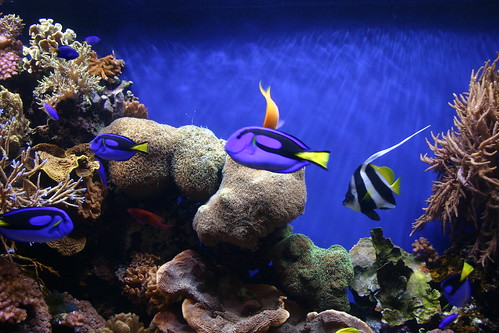Some books deserve a closer read. One of these is The $100 Startup by Chris Guillebeau. Follow along as I delve into the book, chapter by chapter. I’ll breakdown each chapter, providing a sort of Cliff Notes summary. And I’ll include what you can’t find in the book, such as links to the businesses he discusses, ideas for additional reading and my own thoughts.
I’ll post my breakdown of each chapter every couple days. Get the book and follow me on Twitter at @joeflood as we read The $100 Startup.
In the first chapter, Guillebeau set the stage, like a good novelist would. He brought out his main characters (unexpected entrepreneurs) and introduced his theme: building a microbusiness.
Now, in this second chapter, we get into the work of figuring out what kind of business is best for you.
But, first, a parable, one we’re all familiar with.
Give a man a fish and he’ll eat for a day. Teach a man to fish and he’ll eat for a lifetime.
Yes, but when you go out to eat you don’t want to catch, clean and cook your own fish. You just want the fish. Give the customer what they want, instead of what you think they need.
This point is illustrated by the story of the V6 Ranch, which looks like loads of fun. This dude ranch offers more than just horse rides, they give their stressed Californian guests the chance to “escape and be someone else.”
Across the country, Kelly Newsome brings serenity to uptight Washingtonians through her yoga practice. As an ex-lawyer, she understands the pressure of the rat race better than anyone.
These two businesses understand that value means helping people. It is not about a long list of features – horse rides, yoga classes – but instead the value of the business comes from benefits. A meal by campfire is a feature; the feeling of relaxation you get is a benefit. Customers want benefits not features.
Focus on benefits when considering ideas for your own $100 startup.
Guillebeau illustrates this further with an example from his own business. He developed a product called Travel Ninja, based upon his round-the-world adventures. It was a detailed explanation of how to earn frequent flyer miles and book your own travel. It flopped. Customers were overwhelmed by the complexities of the offer. They didn’t want to know how the airline mileage system worked; they just wanted to be told what to do to get the best deals. He refined his product and developed the Travel Hacking Cartel, a simple guide to rapidly earning frequent flyer miles.
Honing in on what people actually want is key. Customers didn’t want to learn the ins and outs of the airline biz, like Guillebeau had. Instead, they wanted to travel to the places of their dreams. People aren’t attracted by features (detailed knowledge of airline programs) they just want the benefit (a memorable week in Bali).
The chapter closes with the story of Brooke Snow, a lifestyle photographer in Utah. I know a lot of talented photographers. With everyone a photographer these days, it’s a brutal business but Snow has differentiated herself by teaching classes online. This “professor of meaningful creativity” teaches courses on technique and storytelling, all of which are sold out. She shares her trade secrets, overcoming the fear that she was training the competition.
In the words of Guillebeau:
When all else fails, ask how you can help people more.
Give people what they want. Give them the fish!
For More Information
Have the dream of being a wedding photographer? My friend Mary Kate McKenna offers a reality check.
Are there too many yoga studios?
Another way to look at features vs benefits is in the recent Mad Men episode on Jaguar. Rather than pitching features in their ad (leather seats, British engineering), the team comes up a persuasive line that is all benefits, “At last, something beautiful you can truly own.” It’s about the emotional experience of owning a Jaguar.
Next: Follow Your Passion… Maybe.





Know if that second shot at a travel business has been successful thus far?
Corey – it’s in the book. His first product had 100 sales the first day while the Travel Hacking Cartel had 3000. That’s a pretty dramatic improvement.